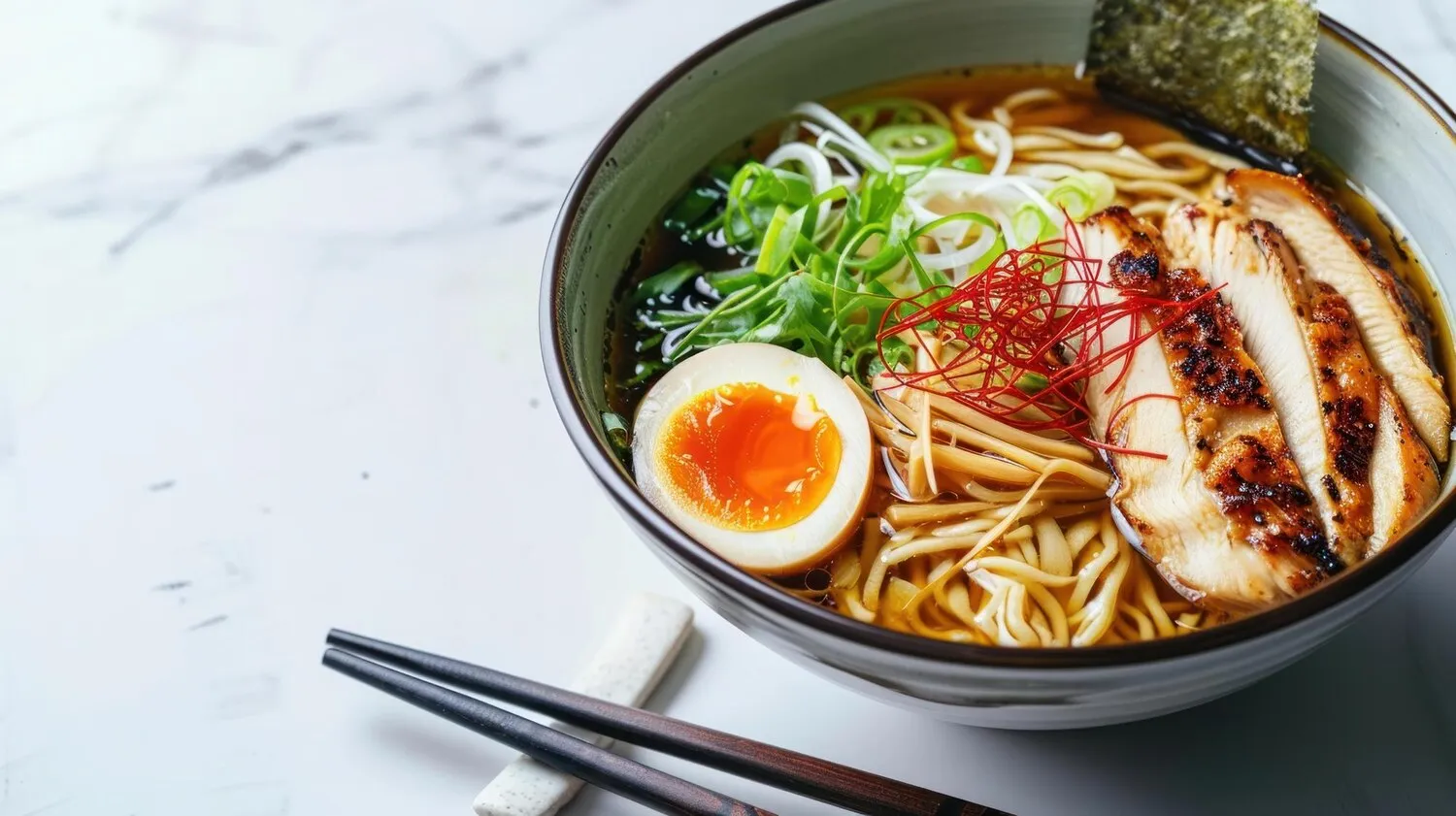
Ramen
They offer a Ramen, described as a hearty and flavorful noodle soup.
Nutrition Facts
* The % Daily Value (DV) tells you how much a nutrient in a serving of food contributes to a daily diet. 2,000 calories a day is used for general nutrition advice.
Ramen's origins trace back to Chinese noodle soups. It was introduced to Japan in the late 19th or early 20th century, becoming increasingly popular after World War II. Regional variations and adaptations led to the diverse ramen styles we know today.
Ramen is deeply ingrained in Japanese culture, enjoyed as a quick and affordable meal, a comforting soul food, and a culinary art form.
Ramen Shops and Culture
Ramen shops (ramen-ya) are ubiquitous in Japan, each often specializing in a particular style or regional variation. Slurping ramen is considered polite and enhances the flavor.
Regional Variations
Different regions in Japan boast unique ramen styles, such as Hakata ramen (tonkotsu broth), Sapporo ramen (miso broth), and Tokyo ramen (soy sauce broth), reflecting local ingredients and preferences.
Instant Ramen
The invention of instant ramen by Momofuku Ando in 1958 revolutionized food culture globally, making ramen accessible and convenient worldwide.
Ramen is celebrated for its rich, savory broth, flavorful noodles, and diverse toppings, offering a symphony of umami, saltiness, and depth.
The broth, typically made from pork, chicken, fish, or vegetables (or combinations thereof), is simmered for hours to extract maximum flavor. Tare, a concentrated seasoning base (soy sauce, miso, salt), provides the foundation of the broth's taste. Noodles are made from wheat flour, water, salt, and kansui (alkaline mineral water), contributing to their characteristic texture and chewiness. Toppings like chashu (braised pork belly), menma (fermented bamboo shoots), nori (dried seaweed), scallions, and soft-boiled eggs add further layers of flavor and texture.
Noodle Texture Preference
Many ramen shops allow you to specify your preferred noodle texture – from very firm (kata) to very soft (yawa).
Broth Temperature
Enjoy the ramen while the broth is still hot to fully appreciate its aroma and flavor. Don't let it sit for too long.
Customizing Toppings
Experiment with adding extra toppings or condiments, like chili oil, sesame seeds, or garlic, to personalize your ramen experience.
The Art of Slurping
Don't be afraid to slurp! Slurping introduces air into the mouth along with the noodles, enhancing the aroma and cooling the noodles slightly. It also indicates you're enjoying the meal.
Explore additional Ramen dishes and restaurants
Explore RamenDiscover top dining spots and culinary experiences in Graz.
Explore GrazLearn more about the food culture, restaurant scene, and culinary heritage of Austria.
Explore Austria